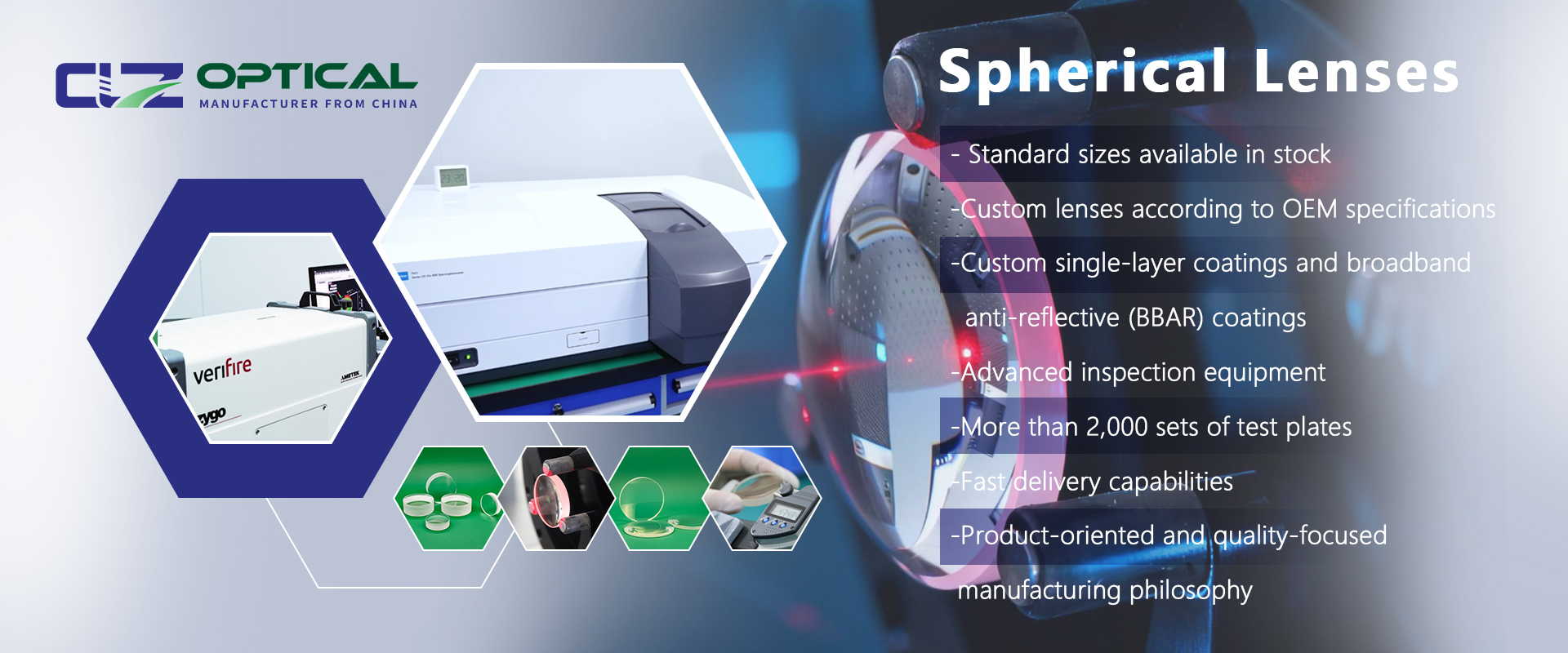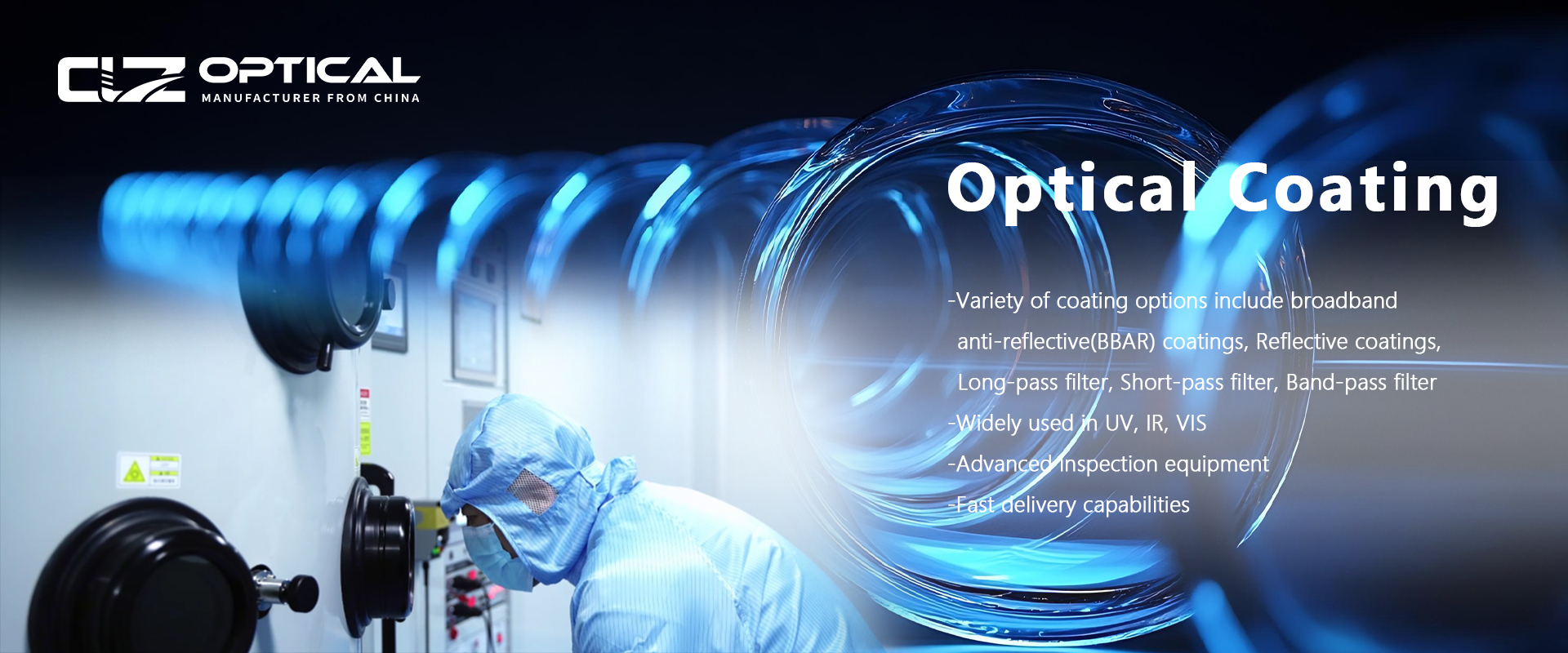Optical Products in Instrument & Engineering
Jul. 23, 2025
CLZ Optical Co., Ltd. was founded in 2012 with a commitment to the processing and manufacturing of precision optical components. Our products are used in a wide variety of fields including optical imaging systems, optical testing, medical instruments, lasers Systems, Environmental Science & Meteorology, Instrument, Underwater Optics and more. With excellent quality and exquisite craftsmanship, our products have won the widespread praise of our customers, both foreign and domestic.
As an enterprise focusing on the field of precision optics, CLZ Optical Co., Ltd. adheres to our core tenet of “Precision in production, specialty in quality”. To ensure each product can meet the specifications of our customer’s drawings and needs, we strictly follow ISO9001 quality certification system standards. Additionally, we employ a wide array of metrological instruments including ZYGO interferometer, Agilent Cary 5000 Spectrophotometer, various instruments for measuring transmission, reflection, centration, focal length, and any other measurements our customers may need.
CLZ Optical provides customized optical components for industrial inspection and scientific research instruments to solve practical problems. Addressing issues such as inaccurate measurement, signal interference, and difficulties in microscopic imaging, our components help equipment obtain clear images, capture characteristic signals, manage light beams, and resist interference by controlling the optical path. These components directly enhance capabilities in automated quality inspection, material analysis, microscopic observation, and extreme environment detection.
CLZ Optical offers customization services based on material technology, precision machining, and coating processes. Reliable materials such as fused silica, sapphire, and optical glass are selected to ensure stable component operation under high temperature, high pressure, corrosive, or strong radiation environments. We also support optical system integration, with products including precision lens assemblies, optical prisms, UV/IR filters, windows, and high-reflectivity mirrors.
Core Optical Components in Industrial Instruments and R&D
(1) Precision Lens Assemblies
Achromatic cemented-double/triple lens assemblies utilize the different dispersion characteristics of composite optical materials to mutually cancel out chromatic aberration, correcting the focusing deviation of light at different wavelengths to ensure dimensional measurement accuracy. Telecentric lenses eliminate perspective distortion through unique parallel optical path design, guaranteeing the authenticity of geometric feature measurements on parts. Microscope objectives rely on high numerical aperture (NA) structures to significantly enhance light-gathering capability, improving the capture efficiency of weak spectral or image signals in R&D.
(2) Optical Prisms
The core mechanism of optical prisms lies in precisely controlling the propagation direction and image orientation of light. Utilizing the principle of total internal reflection or specific combinations of reflective surfaces, they achieve accurate light path redirection (e.g., 90° deflection), compensate for or reverse image rotation caused by equipment motion/vibration, and split a single beam into multiple paths or recombine multiple beams. These capabilities make prisms key components for building stable optical paths, correcting imaging orientation, implementing optical measurements, and efficiently folding light paths within compact spaces.
(3) Optial Filters
The core value of high-performance filters lies in selectively transmitting target band optical signals while robustly removing interference signals. Designed based on precise dielectric film interference effects or the energy band characteristics of semiconductor materials, they precisely control the passage of light within specific wavelength ranges (e.g., UV or IR), while strictly filtering, suppressing, or blocking interference from non-target bands (e.g., visible light, background radiation, stray light). This significantly enhances signal-to-noise ratio, detection sensitivity, and imaging contrast.
(4) Special Windows
Fused silica windows resist thermal shock in high-temperature welding environments due to their extremely low coefficient of thermal expansion (CTE), protecting internal optical systems. Sapphire windows rely on their ultra-high hardness and chemical inertness to withstand deep-sea high pressure, abrasion, and corrosion, ensuring observation clarity.
(5) High-Precision Mirrors
The core function of high-precision mirrors is to achieve near-limit high reflectivity and precisely control the reflection path and deflection angle of light beams. By depositing metallic films (e.g., aluminum, silver, gold) or designing precise multi-layer dielectric film interference structures on substrates,mirrors achieve extremely high reflection efficiency within specific bands, minimizing optical energy loss. They are the cornerstone for guiding beam direction, constructing laser resonant cavities, and realizing light path redirection and integration.
3. Core Role of Optical Components in Industrial Instruments and R&D
(1) Precision Lens Assemblies
Industrial vision inspection systems rely on achromatic cemented-double/triple lens assemblies to eliminate chromatic distortion, ensuring micron-level dimensional measurement accuracy. Telecentric lenses eliminate perspective error and are indispensable components for automated inspection of precision parts. Research-grade spectrometers utilize high-performance objectives to efficiently collect weak characteristic spectral signals, providing the critical optical foundation for material composition identification. Precision scanning lenses in laser confocal microscopes achieve high-resolution 3D imaging of subcellular structures.
(2) Optical Prisms
Optical prisms play a core role in light path manipulation and image stabilization within instruments. In online inspection systems, they correct (reverse) image rotation caused by conveyor belt vibration in real-time, ensuring stable and reliable defect recognition. In precision optical measurement equipment (e.g., interferometers), prisms accurately separate and recombine reference and measurement beams, forming the basis for nanometer-level precision topography analysis. Simultaneously, the efficient light path redirection and folding capability of prisms greatly optimizes the optical system layout and size of various R&D instruments, especially portable devices.
(3) High-Performance Filters
The core role of high-performance filters is to enhance target signal purity by removing background and stray interference. In biological microscopy imaging, they precisely transmit fluorescence excitation/emission bands and filter out non-relevant light interference, yielding high-contrast cellular images. Industrial thermal imagers rely on infrared (IR) filters to suppress environmental radiation noise, improving sensitivity for detecting minute temperature differences. Environmental gas analysis equipment utilizes them to precisely lock onto target gas absorption peaks and exclude interference from other bands, enabling reliable quantification of pollutant concentrations. Night vision systems also depend on filters to remove stray light interference, enhancing imaging clarity under low-light conditions.
(4) Optical Windows
Industrial welding robot vision systems employ fused silica windows to resist intense light radiation and spatter from high-temperature arcs, ensuring continuous and reliable operation. Deep-sea exploration instruments rely on sapphire windows to withstand ultra-high hydrostatic pressure and seawater corrosion, enabling high-definition observation in deep-sea environments.
(5) High-Precision Mirrors
High-precision mirrors are core components for guiding light beams and constructing efficient optical paths. Fourier Transform Infrared (FTIR) spectrometers rely on them to maintain high reflectivity in the mid-infrared (MIR) band and precisely steer beams, ensuring accurate spectral data acquisition. High-power laser processing and R&D platforms utilize them to build low-loss resonant cavities, achieving stable reflection, precise steering, and efficient energy utilization of laser beams.
4. CLZ Optical Production Capabilities and Services
CLZ Optical specializes in manufacturing core optical components for the industrial instrument and R&D sectors. Leveraging mature material technology and precision machining processes, combined with strict quality control, we ensure components operate stably under harsh environments such as high temperature, high pressure, and strong radiation, providing solid optical support for industrial inspection and scientific instruments.
CLZ Optical precisely manufactures five core product lines: Precision Lens Assemblies eliminate measurement distortion through achromatic design and telecentric optical paths, ensuring micron-level dimensional accuracy and weak signal capture capability; Optical Prisms achieve precise light path deflection and image rotation correction, providing a stable foundation for online inspection and precision measurement; Filters selectively transmit target bands based on interference film stacks, removing interference signals, significantly enhancing fluorescence excitation purity and thermal imaging signal-to-noise ratio; Special Windows utilize fused silica, sapphire, materials to resist welding heat, deep-sea corrosion, safeguarding optical system integrity; High-Precision Mirrors achieve high-reflectivity beam reflection and steering, ensuring accurate infrared spectral data and efficient laser resonant cavity operation. We empower industrial innovation with superior craftsmanship, serving as your steadfast partner in R&D and precision inspection.




















